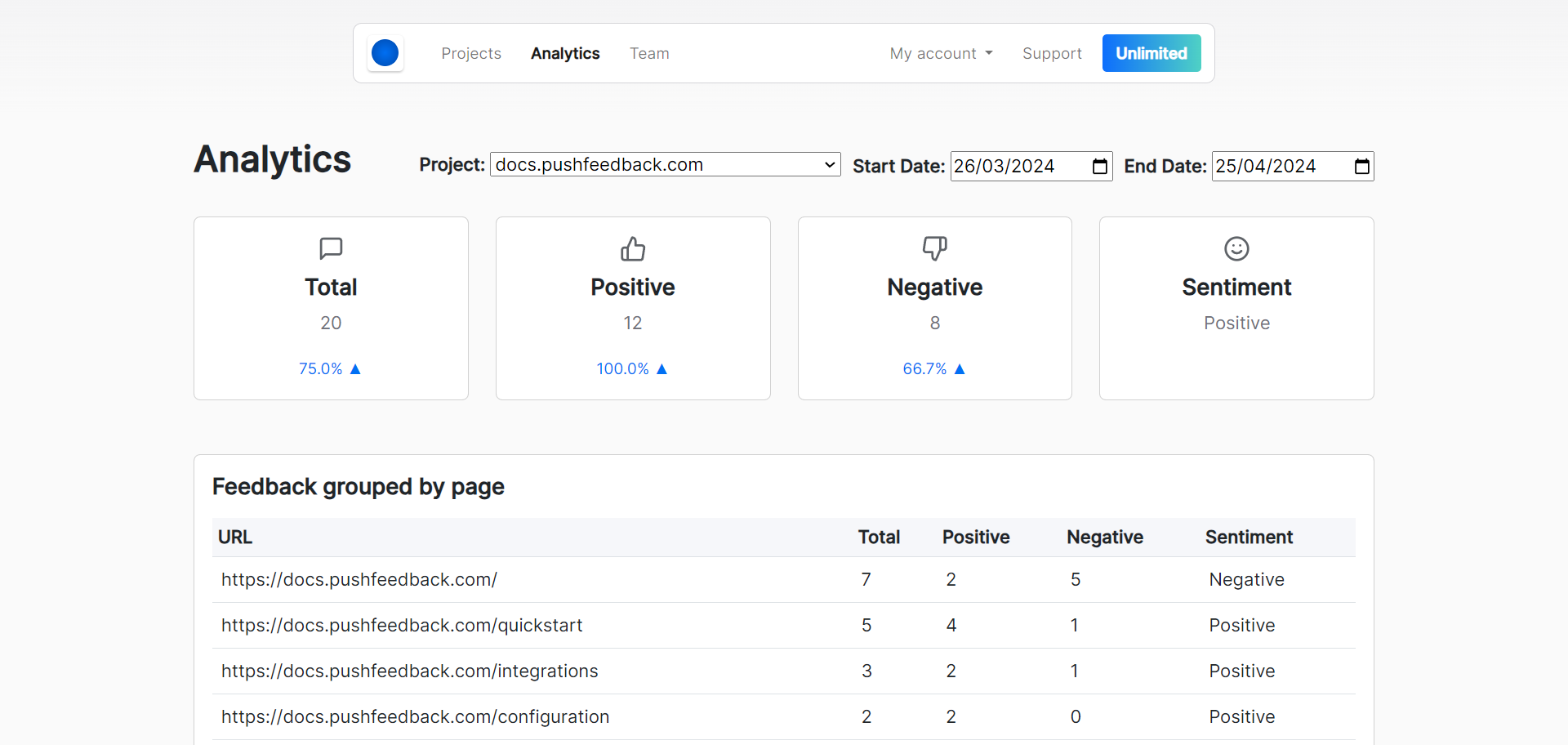Top 5 feedback metrics you should track and why

In today's competitive business landscape, understanding your customers' experiences and opinions is paramount. Tracking feedback metrics allows you to gauge customer satisfaction, identify areas for improvement, and make data-driven decisions. This article delves into the top five feedback metrics you should track and why they are essential for your business's success.
1. Net Promoter Score (NPS)
What is NPS?
Net Promoter Score (NPS) is a widely used metric that measures customer loyalty and satisfaction. It asks a simple question: “On a scale of 0-10, how likely are you to recommend our product/service to a friend or colleague?” Based on their responses, customers are categorized into:
- Promoters (9-10): Loyal enthusiasts who will keep buying and refer others.
- Passives (7-8): Satisfied but unenthusiastic customers who are vulnerable to competitive offerings.
- Detractors (0-6): Unhappy customers who can damage your brand through negative word-of-mouth.
Why is NPS important?
NPS is crucial because it provides a clear, quantifiable measure of customer loyalty and satisfaction. High NPS indicates a strong, loyal customer base, while a low NPS signals the need for immediate improvements. Tracking NPS over time helps you understand how changes in your product or service impact customer loyalty.
How to track NPS
- Surveys: Regularly send NPS surveys to your customers via email or in-app prompts.
- Analyze responses: Identify trends and patterns in promoter, passive, and detractor feedback.
- Act on feedback: Use insights from NPS to improve products, services, and customer support.
2. Customer Satisfaction Score (CSAT)
What is CSAT?
Customer Satisfaction Score (CSAT) measures how satisfied customers are with a specific interaction, product, or service. It usually involves a straightforward question: “How satisfied are you with your experience?” Customers rate their satisfaction on a scale (e.g., 1-5 or 1-10).
Why is CSAT important?
CSAT is a direct indicator of customer happiness. It helps you understand customer reactions to specific aspects of your business, such as a new feature, customer service interaction, or purchase experience. High CSAT scores reflect well-received experiences, while low scores highlight areas needing attention.
How to track CSAT
- Surveys: Implement CSAT surveys after key customer interactions or at critical touchpoints.
- Monitor results: Regularly review CSAT scores to identify areas for improvement.
- Take action: Address issues highlighted by low CSAT scores to enhance customer satisfaction.
3. Customer Effort Score (CES)
What is CES?
Customer Effort Score (CES) measures how much effort customers have to exert to get an issue resolved, a question answered, or a product purchased. It typically involves a question like: “How easy was it to interact with us today?” Customers rate the ease of their experience on a scale (e.g., 1-7).
Why is CES important?
CES is crucial because it highlights friction points in the customer journey. Reducing customer effort leads to higher satisfaction and loyalty. Customers are more likely to continue using a product or service that is easy to interact with.
How to track CES
- Surveys: Conduct CES surveys after support interactions, transactions, or other significant touchpoints.
- Identify pain points: Analyze CES data to pinpoint areas where customers face difficulties.
- Improve processes: Streamline processes and remove barriers to make interactions as effortless as possible.
4. Churn Rate
What is churn rate?
Churn rate measures the percentage of customers who stop using your product or service over a specific period. It's a critical metric for subscription-based businesses and provides insights into customer retention.
Why is churn rate important?
Churn rate is essential because it directly impacts your revenue and growth. A high churn rate indicates problems with customer satisfaction, product fit, or competitive offerings. Understanding why customers churn helps you address underlying issues and improve retention.
How to track churn rate
- Monitor usage: Track the number of customers who cancel subscriptions or stop using your product.
- Conduct exit surveys: Ask churning customers why they are leaving to identify common reasons.
- Implement retention strategies: Use insights from exit surveys to develop strategies that reduce churn, such as improving product features or offering better customer support.
5. Product Feedback Score (PFS)
What is PFS?
Product Feedback Score (PFS) aggregates customer feedback on specific product features or aspects. It involves asking customers to rate features or provide qualitative feedback on their experiences.
Why is PFS important?
PFS is important because it provides granular insights into how customers perceive different parts of your product. This metric helps prioritize product development and enhancements based on user preferences and pain points.
How to track PFS
- Feature-specific surveys: Collect feedback on individual product features or updates.
- Analyze feedback: Aggregate and analyze feedback to identify trends and areas for improvement.
- Prioritize development: Use PFS data to prioritize product enhancements and ensure they align with customer needs.
Using PushFeedback to enhance feedback collection
While tracking these metrics is crucial, the method of collecting feedback can significantly impact the quality and usability of the data. PushFeedback is a feedback widget that can help you efficiently gather and manage user feedback, which can then be analyzed to extract valuable insights relevant to these metrics.

How PushFeedback can help
- Feedback widget integration: Integrate PushFeedback directly into your website or app to collect user feedback seamlessly.
- Customizable appearance: Match the widget to your brand’s aesthetics for a cohesive user experience.
- Screenshot support: Users can attach screenshots to their feedback, providing context and making it easier to understand and address their concerns.
- Real-time dashboard: Monitor feedback in real-time and analyze trends and help you track key metrics.
- Team collaboration: Invite team members, assign roles, and work together to analyze and act on feedback.
By leveraging PushFeedback, you can streamline the feedback collection process, making it easier to gather and act on the data necessary to track these essential metrics. This will help you improve customer satisfaction, reduce churn, and prioritize product development effectively.
Conclusion
Tracking feedback metrics is vital for understanding customer satisfaction, loyalty, and overall business health. Metrics like NPS, CSAT, CES, churn rate, and PFS provide actionable insights that can drive significant improvements in your product or service.
By focusing on these top feedback metrics, you can enhance customer satisfaction, improve product performance, and ensure long-term business success.

